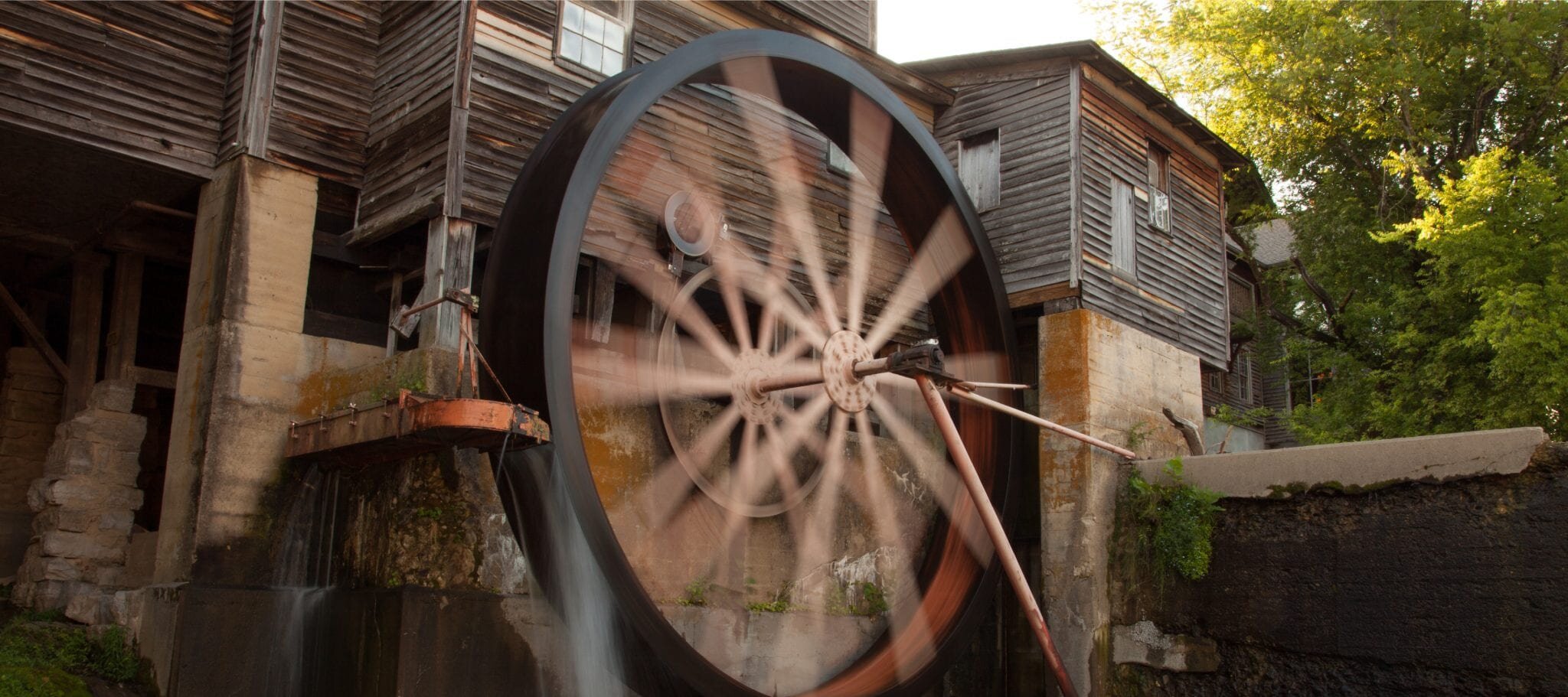What is a Grist Mill?
Once upon a time across America, the land was dotted with grist mills. These water-powered mills were situated next to a swift river where the current from that river turned the water wheel, which turned the heavy stones, which ground the corn into cornmeal or the wheat into flour for baking and cooking.
Our mill at The Old Mill was built in 1830, so it is nearly 200 years old. Here, just like yesterday, our millers grind corn and whole wheat and you can purchase sacks of meal and flour in our General Store, just as the pioneers did in the early days in these East Tennessee mountains.
A grist mill is where grains are ground
What exactly is a grist mill? In simple terms, it is a mill where grains are ground.
The word “grist” meant cereal grains to early settlers.
The earliest grist mills in America were built in the early 1600s. But the grinding of grain goes back centuries before that. Think of a mortar and pestle and how it can grind something as simple as a dill seed or a whole black peppercorn. This is how grains were first ground.
As time went on, large stones replaced the mortar and pestle in order to grind larger quantities of grain, and slaves turned those heavy stones until the water-powered grist mill was created. Both the Romans and later the French Benedictine monks in the 11th Century used water to power the milling of grain.
You might wonder, does the American image of the turning water wheel, the flour-covered miller, and the chattering of people picking up their cornmeal and flour ring true?
A grist mill was the town center and often the foundry, saw mill, and post office. So, the answer is yes!
Today at The Old Mill, our mill is a place where grains are ground into something finer and more usable in cooking and distilling – meal and flour.
The Old Mill is a national treasure
Many of our country’s grist mills are no longer operable or only their ruins remind you of how they must have symbolized survival to early settlers. Our mill is not only still in operation, it is on the National Register of Historic Places. We like to think it’s our national treasure!
The Little Pigeon River that flows by our mill and provides the power to turn the wheel and stones and produce those grains is a beautiful sight to see in these foothills of the Great Smoky Mountains. When it’s warm, people like to fish on the banks. And when it was cold enough, the river would freeze and folks would ice skate across it.
Our mill has history, too. Back duing the Civil War, the mill owner, John Trotter, was a Unionist, and on the second floor of this brick and timber mill, he set up secret knitting looms to produce clothing for Union soldiers. On the third floor, there was a makeshift hospital. The Old Mill is listed on the Civil War Trail of Tennessee.
The Old Mill is more than just a place to get grits and cornmeal. It is also a reminder of a way of life that was simple, hardworking, and connected to the land. We are proud to be the longest continually running grist mill in the country and it is our desire to preserve this part of our East Tennessee heritage. If you find yourself in Pigeon Forge, Tennessee be sure to stop by The Old Mill for a little taste of history.



